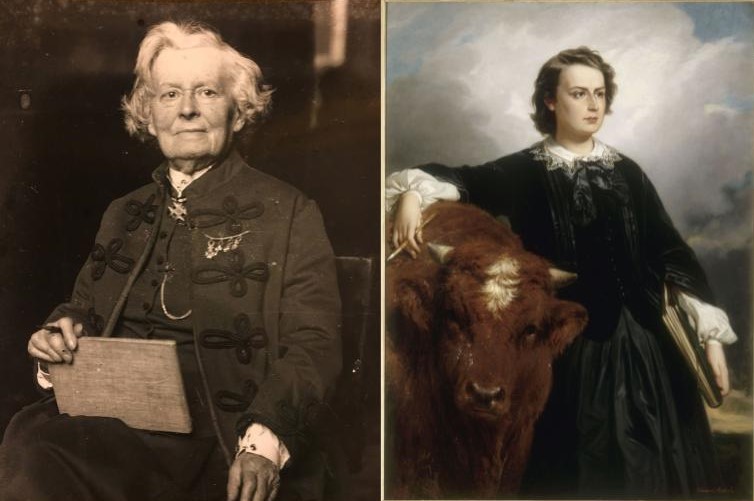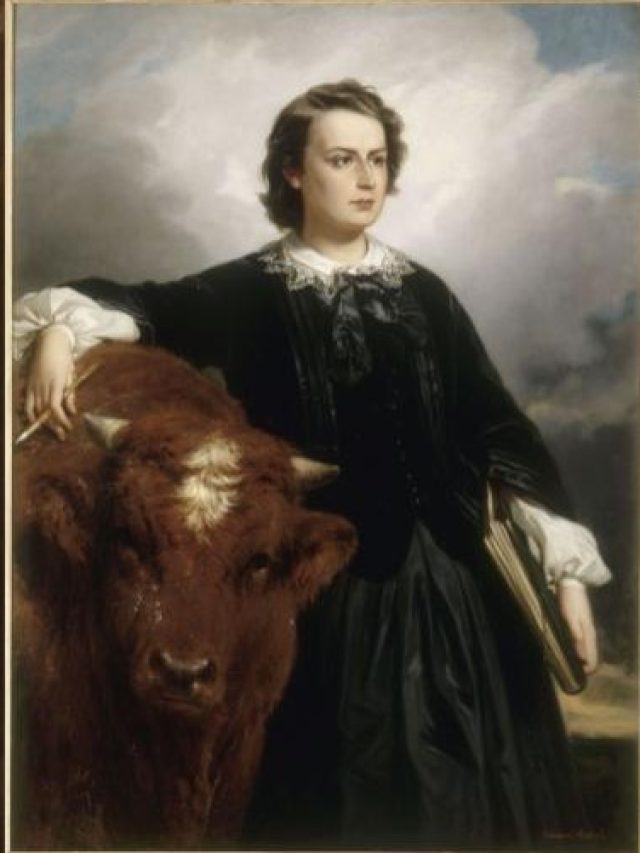Who is Rosa Bonheur? A 19th-century painter who focused on animal painting and realistic sculptures? The legacy of Rosa Bonheur (1822-99) does not end in those zones of interest. Now the world considers Rosa Bonheur one of the most influential female artists in the history of Western Art. She lived with her lesbian spouse Nathalie Micas for over 40 years until Micas’s death, after which she lived with American painter Anna Elizabeth Klumpke.
Rosa’s paintings have been exhibited in Paris Salon many times; one of her paintings, Ploughing in the Nivernais, was shown in Salon in 1848 at the age of 26, and The Horse Fair, which was exhibited at the Salon of 1853. Ploughing in the Nivernais and The Horse Fair is known as her masterpieces, and they are now displayed at the Musée d’Orsay in Paris and the Metropolitan Museum of Art in New York City, respectively.
Fogotten legacy of Rosa Bonheur
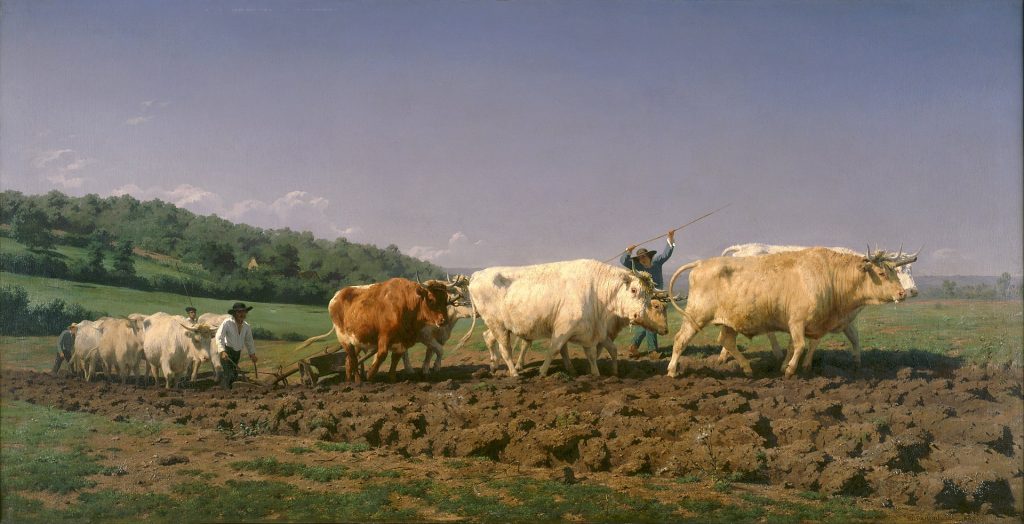
In the 19th century, Rosa was celebrated and widely known in Western Art circles, and 20th century, she was forgotten. At the beginning of 2023, the Musée d’Orsay in Paris bring her works into an exhibition and get her back into artistic life with a retrospective on the bicentennial of her birth, the most extensive collection of her artworks ever and the first primary Bonheur display in Paris for a century. This exhibition carries over 200 artworks by Rosa Bonheur and dozens of supporting prints and photographs by other artists. Most of these works are not displayed in France before this exhibition.
Bonheur devoured a lifetime exploring animals as taught by her father during her teenage years. Her skills were noticed by the people in her teenage time when she began to copy artworks in the Louvre museum; she copied images with photographic precision. Rosa’s skills give her animals a soul; she often portrays them gazing directly at the watcher as if they were human.
Career and works
Rosa was born into an artistic family. Her father and mother trained her to paint early; her mother asked her to paint different creatures for each alphabet letter when she taught her to read. This practice familiarised her with an animal world that would fuel her later work. She follows animal life closely, consisting of proficient portrayals of endemic and strange animals, which would garner notable critical and victory. Her commercial success gives her the privilege to live her way, which is not usually available to female artists then.
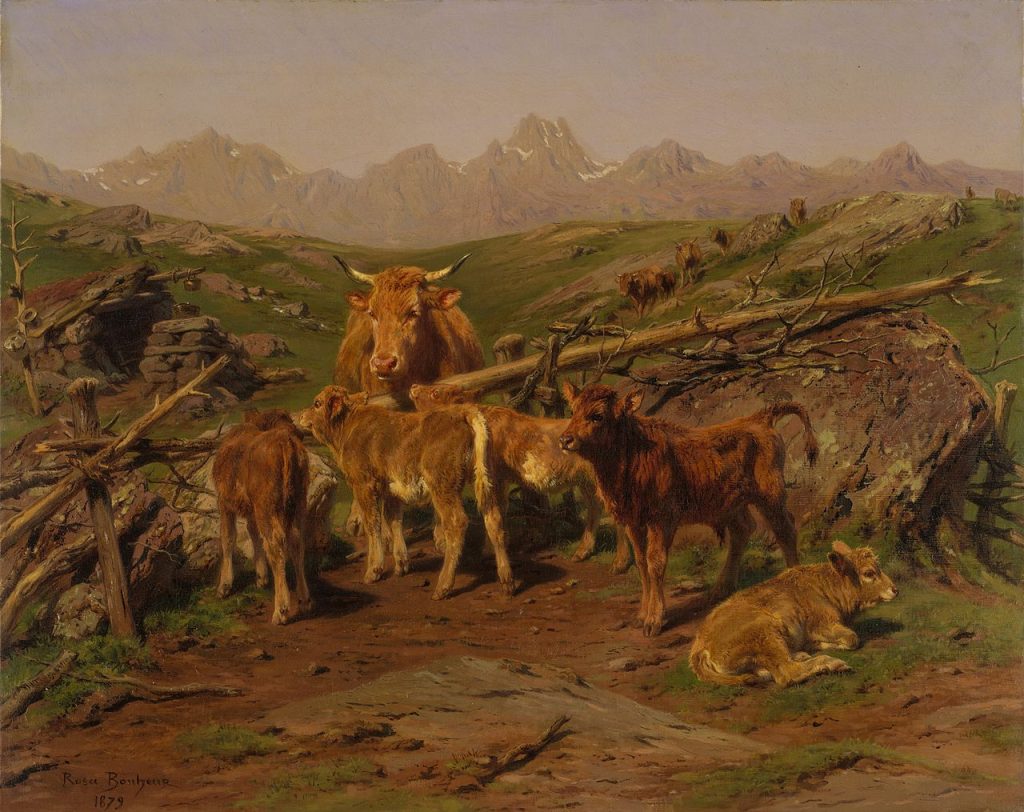
Rosa used to bring animals into her studio to paint, and her father’s political viewpoint denied the sentimentalism of the Romantic action, which can account for the realist topics his daughter painted and the relative equality with which he treated Rosa. Rosa’s family struggled to find a living standard in Paris, and they moved from one tiny apartment to another at the time; her father tried and failed to find an apprenticeship for Rosa because of her rebellious streak. Finally, he let her join him in the studio, where he taught her everything he knew. She enrolled at the Louvre at 14, where she stood out for both her youth and gender.
She met her lifelong companion, Nathalie Micas, at her 14, when she came to learn art lessons from Rosa’s father, and she became increasingly alien from her family due to this affinity, which prevailed until Nathalie died in 1889.
Early Success
After a long period of poverty, Rosa became rich shortly after her father’s new wife let her from taking care of her younger siblings. She focused on her painting more and, at the age of 23, was already gaining attention for her proficient rendering of animals, and it was not unique for her to win prizes for her work. She bested a medal at the Paris Salon in 1845, her first of many.
Ploughing in the Nivernais
This is Rosa’s first known and celebrated painting, portrays two teams of oxen shoving the land, and represents a deep devotion to the ground; it may have been motivated by the opening set of George Sand’s 1846 novel La Mare au Diable. This work won First Medal at the Salon in 1849; today, it is held in the Musée d’Orsay in Paris. Rosa did this painting as a French government-commissioned work, giving her immense popularity and career shift after she won the prize.
The Horse Fair
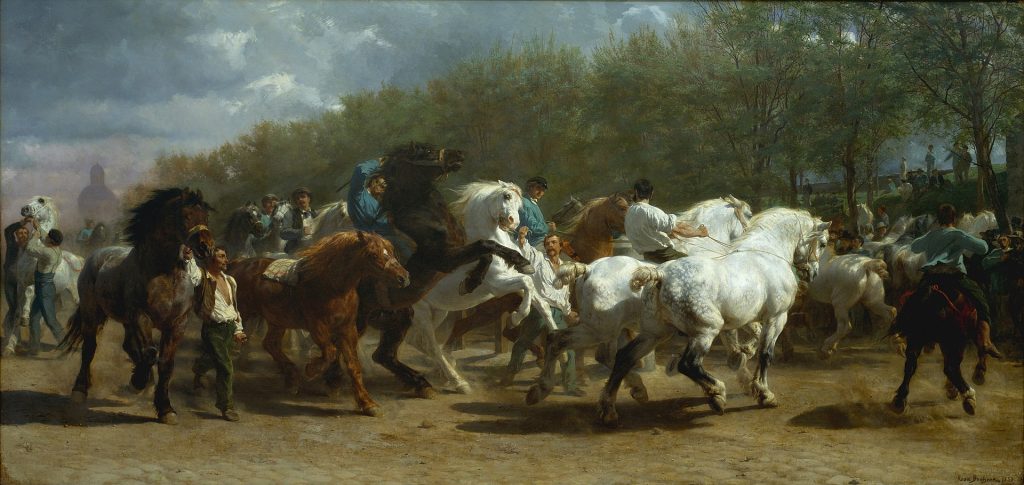
The Horse Fair is Rosa’s second important work, depicting dealers selling horses at the horse market held on the Boulevard de l’Hôpital in Paris. Her interest in animal life followed this work, and she observed the horse market many times before doing work, was followed the market twice weekly for a year and a half from the summer of 1850 to the end of 1851.
conclusion
Rosa died in 1899 at 77 after a successful artistic career. She was selected as an Honorary Member of the Royal Academy of Water Colourists in London. She was awarded the Commander’s Cross of the Royal Order of Isabella by the King of Spain and the Catholic and Leopold Cross by the King of Belgium. Bonheur was wildly celebrated, and her artistic star has since vanished. Whether due to a diminished like for 19th-century realism, or her position as a woman, Bonheur holds a place in history better as a pioneering woman to glance up to instead of a painter in her own right.


